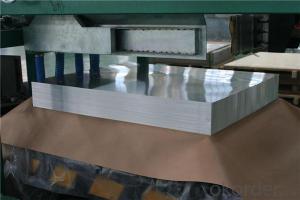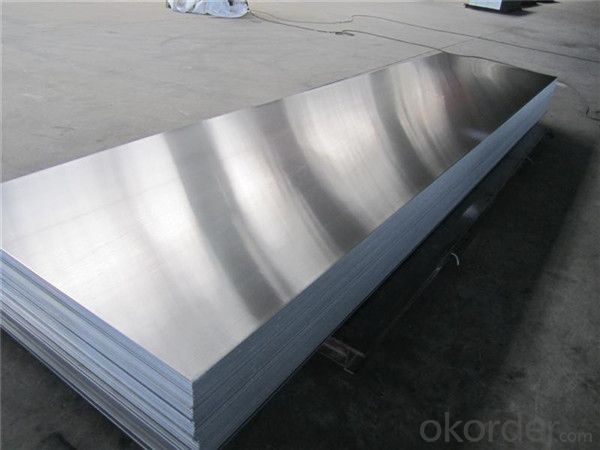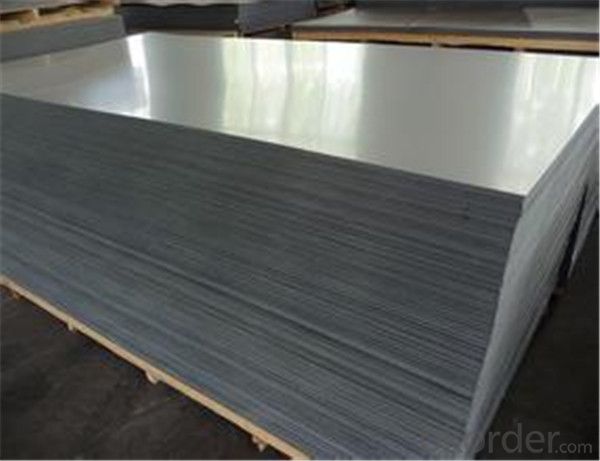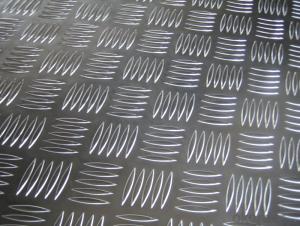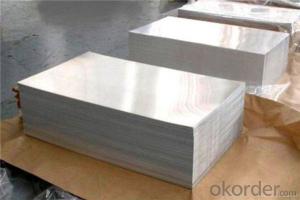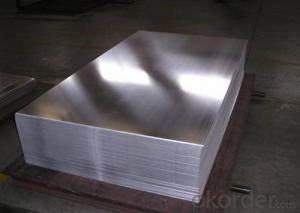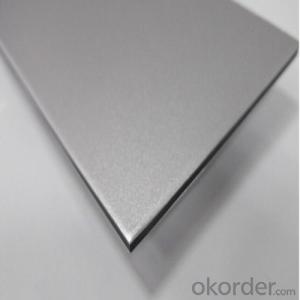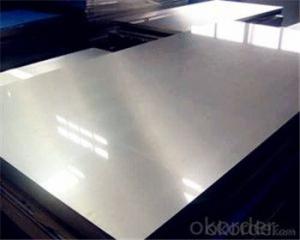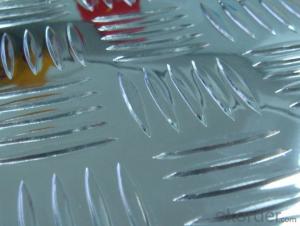Aluminium Sheet Price Per Kg Cheap High Quality 1.Mm Thick Made For Refrigerator
- Loading Port:
- Shanghai
- Payment Terms:
- TT OR LC
- Min Order Qty:
- 5 m.t.
- Supply Capability:
- 100000 m.t./month
OKorder Service Pledge
OKorder Financial Service
You Might Also Like
Specification
Packaging & Delivery
Packaging Details: | Standard export packing or following customer's demand |
Delivery Detail: | Within 20-25days or according to the order quantity |
High Quality and Factory Price Aluminum Coil
Specifications
Grade
| 1000 Series: 1050 1060 1070 1100 1200 1235 etc. 3000 Series: 3003 3004 3005 3104 3105 3A21 etc. 5000 Series: 5005 5052 5083 5086 5154 5182 5251 5754 etc. 6000 Series: 6061 6063 6082 6A02 etc. 8000 Series: 8006 8011 8079 etc. |
Thickness | 0.05~10mm |
Width | <1600mm< span=""> |
Color | Metallic, Solid, RAL or by customer requirements |
Coating paint: | PVDF(Polyvinylidene Fluoride), PE(Polyester ) |
Coating thickness | as per customer’s request |
Gloss | 10-90%(EN ISO-2813:1994) |
Total coating thick | Polyester18~27micron(EN ISO-2360:1995) PVDF27 ~35micron(EN ISO-2360:1995) |
Coating hardness | 2H |
Protective film | PVC film, Colorless transparent or White-black |
Adhesion | 5B (EN ISO-2409:1994) |
Impact resistance | No cracking and peeling (A.S.T.M D2794-1993) |
Flexibility (T-bend) | 0T- 2T |
Temper | H16, H18, H24, H26, H26 |
Certification | ISO9001:2000, CE, SGS |
Coil's standard diameter | 1100mm |
Inner Diameter | 405mm/505mm |
Coil's standard weight | 2000kgs |
Payment | L/C ,T/T |
Parameter
Product | Alloy | Temper | Thickness | Width | I.D(mm) | Application |
Aluminum Coil/Strip | 1050,1060,1070, 1100,1200,1235, 1145,3003,304, 3105,3A21, 8011 | O H12 H14 H16 H18 H22 H24 H26 | 0.2-8mm | 50-2400mm | 75,150 200,300 400,505 (as customers's request) | construction,decoration, automobile,electronic, machinery,boat construction, aeronatics&astronautics, cookware,packing etc. |
Application:
1) Radiator
2) Condenser
3) Insulation Material
4) Construction
5) Decoration
6) Advertisement and market applications
Photos
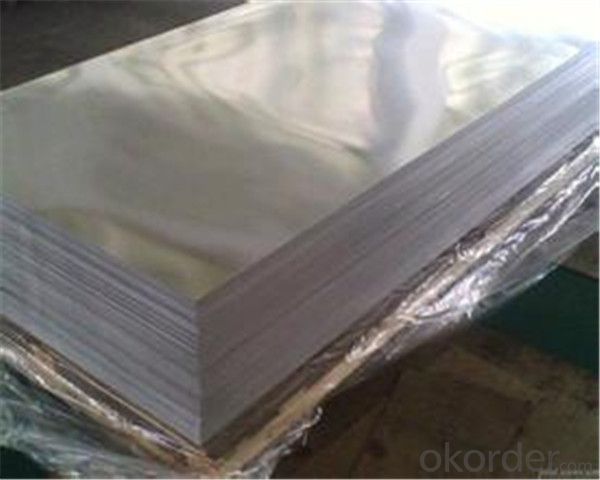

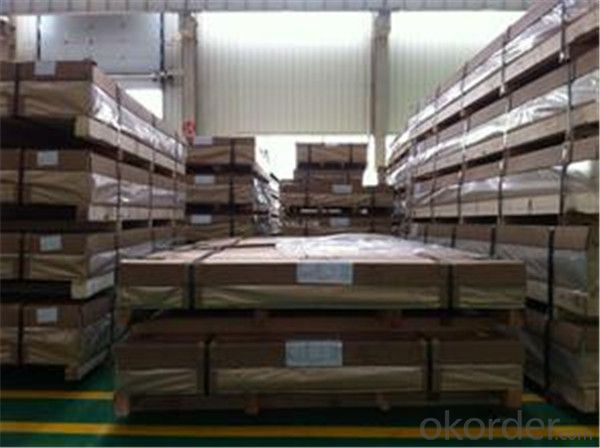
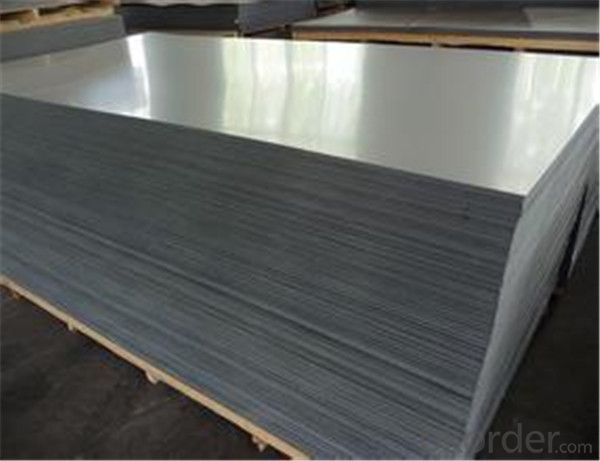
- Q: Are aluminum sheets suitable for beverage cans?
- Yes, aluminum sheets are suitable for beverage cans. Aluminum is a widely used material in the beverage industry due to its unique properties. It is lightweight, corrosion-resistant, and provides an excellent barrier against light, oxygen, and moisture, which helps to preserve the quality and freshness of the beverage. Additionally, aluminum is easily formable, allowing for the production of various can shapes and sizes. It is also recyclable, making it an environmentally friendly choice. Overall, aluminum sheets are an ideal material for beverage cans, meeting both functional and sustainability requirements.
- Q: What are the different edge treatments available for aluminum sheets?
- Aluminum sheets offer a range of edge treatments, each with its own purpose or aesthetic appeal. Some commonly used edge treatments for aluminum sheets are as follows: 1. Mill Finish: The standard treatment leaves the sheet's raw edges untouched, resulting in a smooth, unfinished look. 2. Trimmed: This treatment involves trimming and smoothing the rough edges of the sheet to create a clean, rounded edge. Techniques like shearing or milling are often employed. 3. Deburred: Sharp edges are removed through deburring, which typically involves filing or sanding. This process ensures a smoother and safer edge. 4. Rolled: By bending the edges inward or outward, rolled edges provide added strength and rigidity to the sheet while enhancing its appearance. 5. Anodized: Anodizing involves immersing the sheet in an electrolytic solution and applying an electric current. This creates a protective oxide layer that can be colored, resulting in an attractive and durable edge finish. 6. Powder Coated: Dry powder paint is applied to the sheet and then heated to form a hard, protective finish. This treatment allows for a variety of colors and textures to be achieved. 7. Brushed: Abrasive materials are used to brush the sheet, creating a visually appealing textured edge. Brushed finishes are often chosen for decorative purposes. 8. Polished: The sheet is buffed to create a smooth and reflective surface. Polishing is commonly utilized in architectural and decorative applications to enhance the edge's appearance. These examples illustrate the range of edge treatments available for aluminum sheets. The choice of treatment depends on factors such as the intended use, desired aesthetics, and functional requirements of the sheet.
- Q: This question asks for the steps to take in order to accurately measure the dimensions of an aluminum sheet before purchasing one.
- <p>To measure the dimensions of an aluminum sheet for purchase, first, ensure you have a measuring tape or a ruler. Measure the length and width of the sheet from one corner to the opposite corner, making sure to measure along the longest and widest sides. Record these measurements in the same unit of measurement used by the supplier (commonly inches or centimeters). If the sheet is not a perfect rectangle, measure the diagonal to confirm the dimensions. Note any irregularities or variations in thickness that might affect the intended use. Once you have these measurements, compare them with the available options from the supplier to select the appropriate size.</p>
- Q: What are the different methods of surface treatment for aluminum sheets?
- There are several methods of surface treatment for aluminum sheets, each serving different purposes and achieving specific results. Some common methods include anodizing, chromate conversion coating, painting, and powder coating. Anodizing is a popular method used to enhance the corrosion resistance and durability of aluminum sheets. It involves immersing the sheets in an electrolytic bath and applying an electric current to create a controlled oxide layer on the surface. This process results in a protective and decorative coating that can be further colored or sealed. Chromate conversion coating, also known as chemical conversion coating or chromating, involves coating the aluminum sheets with a thin layer of chromate. This method provides excellent corrosion resistance and improves paint adhesion. Chromate conversion coatings can be clear or have a yellowish or iridescent appearance. Painting is another method widely used to protect aluminum sheets and enhance their aesthetic appeal. The sheets are typically pre-treated with a primer to improve adhesion, and then a topcoat is applied for protection and color. Painted aluminum sheets come in a vast range of colors and finishes, making them suitable for various applications. Powder coating is a durable and environmentally friendly method of surface treatment for aluminum sheets. It involves electrostatically applying a dry powder onto the sheets and then curing them in an oven. The powder melts and fuses to form a tough and attractive coating. Powder coating offers excellent resistance to corrosion, chemicals, and UV radiation. In addition to these methods, there are other surface treatment techniques such as polishing, buffing, and mechanical finishes that can be employed to achieve specific desired appearances or surface qualities. Overall, the choice of surface treatment method for aluminum sheets depends on factors such as the desired level of corrosion resistance, aesthetic requirements, environmental considerations, and the intended application of the sheets.
- Q: I need to find 3 elements for my science hw tonight. I was wondering if aluminum foil is a pure element. And also I was wondering if anyone had any ideas of what is a pure element (not a compound or an alloy). Thanks!!!!
- www.okorder
- Q: How do you protect aluminum sheets from scratches?
- To protect aluminum sheets from scratches, there are a few steps you can take: 1. Handle with care: When handling aluminum sheets, always be mindful of their vulnerability to scratches. Avoid dragging or sliding them across rough surfaces, as this can cause scratches. Instead, lift and place them gently, ensuring you have a clean, smooth surface to work on. 2. Use protective covering: Before storing or transporting aluminum sheets, consider using a protective covering such as a plastic film or paper. This will provide a barrier and prevent direct contact with other surfaces, reducing the risk of scratches. Ensure that the covering is clean and free from any dirt or debris. 3. Store in a safe environment: When not in use, store aluminum sheets in a clean and dry environment. Avoid storing them alongside abrasive materials or objects that could potentially scratch them. Additionally, consider using dividers or separators to create individual compartments for each sheet, preventing them from rubbing against each other. 4. Clean with caution: When cleaning aluminum sheets, use a soft, non-abrasive cloth or sponge. Avoid using wire brushes or rough materials that can cause scratches. Additionally, use a mild detergent or aluminum cleaner specifically designed for this purpose. Rinse thoroughly and dry the sheets completely to prevent any moisture from causing damage. 5. Apply a protective coating: Another option to protect aluminum sheets from scratches is to apply a protective coating. There are various types of coatings available, such as clear lacquers or specialized aluminum protectants. These coatings create a thin barrier on the surface of the aluminum, adding an extra layer of protection against scratches. By following these steps, you can significantly reduce the risk of scratches on your aluminum sheets and help maintain their appearance and integrity over time.
- Q: Can aluminum sheets be painted?
- Yes, aluminum sheets can be painted. However, it is important to properly prepare the surface by cleaning, sanding, and using a primer specifically formulated for metal surfaces to ensure good adhesion of the paint.
- Q: Are 101 aluminum sheets suitable for radiator manufacturing?
- Yes, 101 aluminum sheets are suitable for radiator manufacturing.
- Q: I don't know if the electrons are being passed from my hand to the aluminum or from the aluminum to my hand.Thanks
- Aluminum is a metal and every metal has a property that it holds electrons of its outer most orbital quite loosely ( it is electropositive ). And our hand's skin consists of mostly COVALENT bonded compounds which hold their electrons quite tightly. So if we touch aluminum the chances are strong that the electrons are being transferred from aluminum to our hands. But since our hand have covalent compounds so the total transfer must be very small if it is anyway. Otherwise we feel shock every time we touch a neutral aluminum also IF U develop some negative charge then aluminum will take that charge since it has small hold on the outermost electrons. so it easily takes charge frm yr hand at lower potential to its ground potential surface.
- Q: I am engaged in line cutting, because the cut aluminum plate conductive block wear more fierce, molybdenum wire is often broken card, I do not know that heroes have unique skills, say, we share. Thanks.
- Wire cutting is electrical discharge machining, which is developed on the basis of EDM, punching and forming. In some ways, EDM has been replaced by electrical discharge drilling. The processing object can be as long as the conductive metal parts. Cutting aluminum plate, steel plate effect is basically the same, but the cutting speed is different.
Send your message to us
Aluminium Sheet Price Per Kg Cheap High Quality 1.Mm Thick Made For Refrigerator
- Loading Port:
- Shanghai
- Payment Terms:
- TT OR LC
- Min Order Qty:
- 5 m.t.
- Supply Capability:
- 100000 m.t./month
OKorder Service Pledge
OKorder Financial Service
Similar products
Hot products
Hot Searches
Related keywords
